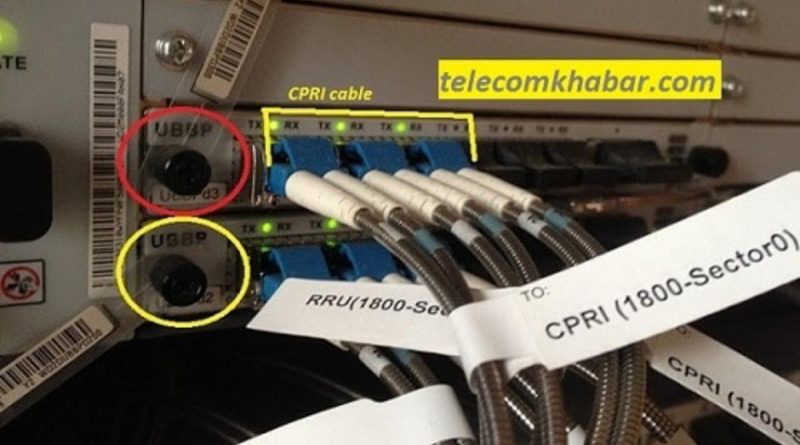BBU-Base Band Unit in Telecom: Function|Details
In this article we are going to explain about the concept, function and details of base band unit BBU used in telecom . Base Band refers to original signal or un-modulated signals. In other words, base band signals occupies the lowest range of frequency spectrum. Base band unit (BBU) processes the signal of original frequency before it is modulated. To clarify, in base band – Frequency is not shifted to some other frequency band by means of modulating.
BBU have DSP (Digital signal processor) that process the conversion of signals between analog and digital signals. Above all, it is known as heart of communication because it serves for communication link between two end users.
BBU along with RRU (Radio Remote Unit) formed as a BTS. Firstly, RRU process the incoming and outgoing radio signals. Subsequently, it also send the signals and receive signals (EM waves) from Antenna through hollow guided Jumper cable.BTS is Base Transceiver station. Altogether, BBU is connected with RRU through CPRI (Common Public Radio Interface ) fiber cable for making BTS.

Typical BBU layoutFunctions of BBU:
1) Provides common public radio interface (CPRI) ports or optical links for communication with RRUs and processes uplink and downlink baseband signals.
2) Provides S1 ports for communication between an E-UTRAN NodeB (eNodeB) and an MME/S-GW, and X2 ports for communication between eNodeBs.
3) Provides clock ports for clock synchronization, alarm monitoring ports for environment monitoring, and a Universal Serial Bus (USB) port for commissioning using a USB flash drive.
4) Manages the eNodeB through operation and maintenance (OM) and signaling message processing.
To sum up from above figure,commonly BBU consists of FAN, LBBP, UMPT, UPEU and other slots. Where necessary cards is inserted for needed operation. This all slots commonly works as the function of bbu in telecom. While, brief description of each above components is given below:
a) FAN: The FAN dissipates heat from the BBU3900. It addition, it also monitors the inlet temperature, controls the rotation speed of the fans, and reports the status of the fans to the LMPT or UMPT in the BBU3900.
b) LBBP: LBBP stands for LTE Base Band Processing Unit. Huawei 3900 series have 3 different LBBP, LBBPa, LBBPb and LBBPc. But in Huawei BBU 3910, LBBP is termed as UBBP. LBBP and UBBP difference is that LBBP is for LTE or 4G communication while UBBP is for 2G and 3G communication. UBBP also have type 3 and type 2 cards, UBBP2 and UBBP3. These both LBBP and UBBP functions is to:
1) Provides CPRI ports for communication with radio frequency (RF) modules.
2) Processes uplink and downlink baseband signals.

c) UMPT: UMPT stands for Universal Main Processing and Transmission Unit. Its functions are:
1) It Performs OM(Operation and Maintenance) functions. Further it also do configuration management, equipment management, performance monitoring, signaling processing, and active/standby switch over.
2) It Provides clock reference,transmission ports,and the maintenance link connecting to the OMC. Here, OMC can be the LMT or M2000 client.
d) UPEU: UPEU stands for Universal Power and Environment interface unit. Its functions are:
1) Converts power of -48v input into +12V with 300 watt and 650 watt power needed for BBU operation and Processing.
2) It takes EMUB signals through RS485 serial communication and converts into Boolean signals. Thus acts as interface unit for BBU and EMUB unit. EMUB is Environment Monitoring unit for sensors alarm.
BBU consists of GPS sensor which track the BBU installed location and if BBU is stolen or theft the GPS coordinate is traced and sent back to telecom operator control room.
There are many BBU models manufacture by various telecom operators. The top 5 telecom equipment manufacturer are Ericsson, Alcatel-Lucent, Huawei Technologies, Cisco Systems and ZTE Corporation. Although these vendors have their own type type BBU model though the basic knowledge is same. The different is that of their power efficiency & processing and working speed.
According to Techtarget, Base Band Unit can come in a variety of shapes and implementations, including:
- Individual baseband processing blocks, or objects within receivers that translate data from a wireless signal.
- Ethernet processing cables or internet cables used to decipher information from a wired baseband signal.
- Digital BBUs.
- Rectangular-shaped BBUs, similar to a car radio.
- Flat BBUs, similar to a circuit.
- Cylindrical-shaped BBUs.





what is processing speed of BBU
it has been a great read. need more of these
Thank you for the explanation.
WOW… It is explained so wonderfully. Thank you 1
thank you for all the given information
Thanks alot